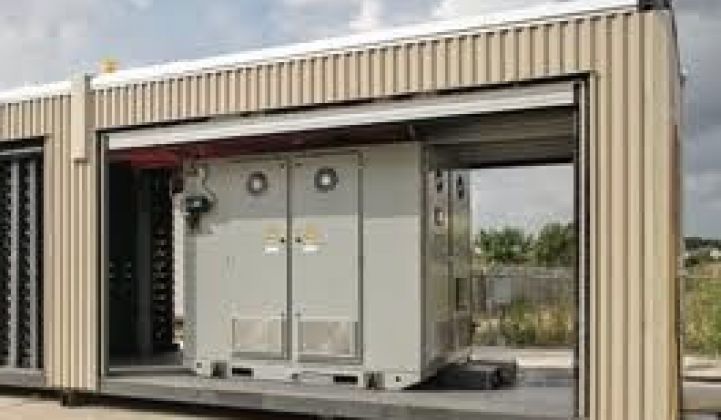Xtreme Power is proving that islands are a fertile ground for grid-scale energy storage projects that may be too expensive for mass markets right now. It's been doing it on Hawaii for years, and now it's going to Alaska's Kodiak Island.
That's where the Austin, Texas-based startup plans to build a 3-megawatt battery system to back up the Pillar Mountain Wind Project, which now supplies up to 10 percent of the rugged island's power supply. The 4.5-megawatt project is set to double to 9 megawatts in its next phase, which could cause major instability on the grid.
Xtreme's battery is meant to balance that wind farm's impact on the grid, both in terms of ramping generation up and down gradually to avoid voltage problems, and in balancing the reactive power involved. Xtreme has a 15-megawatt system doing similar tasks for Oahu's 30-megawatt Kahuku wind farm, and it's also building a 36-megawatt system to back up a Duke Energy wind farm in Texas, as well as several other smaller-scale projects. The Kodiak project brings the company to 55 megawatts of systems under contract and 22 megawatts installed, according to the Tuesday press release.
Chairman Carlos Coe said last month that Xtreme is also looking at smaller-scale storage projects, such as “community energy storage” (CES) applications where refrigerator-sized backyard batteries smooth power flow, store off-peak power for use during peak hours, and help homes and businesses keep the lights on during power outages.
Even so, grid-scale energy storage is still too expensive to compete against gas-fired peaker plants in almost all cases. That's limited it to places where high power costs and difficulties of integrating intermittent wind and solar power into the grid make them effective -- as in Hawaii or Kodiak Island -- or in places where batteries let utilities avoid building brand-new transmission or distribution infrastructure.
Renewable power could add a new set of calculations that make energy storage cost-effective, however. On the large scale, we’ve seen wind farms turning to large-scale batteries to smooth out their up-and-down power generation. A123 Systems has more than 100 megawatts of grid storage deployed, which has helped it weather increasingly bad news on the EV battery front.
Xtreme's unique and well-guarded "chemical capacitor" storage technology is meant to match lithium-ion battery performance, all using dry materials that sit like stacked bricks in operations centers. They're inert, as compared to the highly volatile lithium-ion chemistries of today, and they can operate at room temperatures, unlike the leading grid-scale technology of sodium sulfur batteries.
Xtreme faces plenty of competition in the space from battery companies like A123, Saft, AltairNano and Japanese giants like Mitsubishi, Panasonic and Hitachi. But its continued march of deployments indicates that it's getting good marks for performing as promised. Now the energy storage industry has to prove that what it has got to offer is worth its price, in a market that's not built to value stored energy. Islands are one thing, but the mainland is a much more challenging environment.



